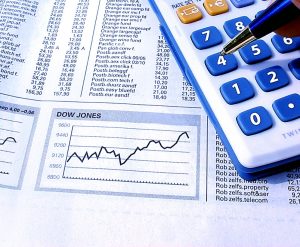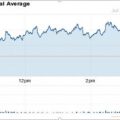How To Invest In The Dow Jones Industrial Average Index
If you can’t beat the market – follow it! This is a popular maxim, briefly describing that it’s not so easy to beat the market, but it’s really easy to follow it. As you may know, “The Market” here means the overall performance of all traded shares which is measured by stock indexes, like the Dow Jones Industrial Average Index and S&P500 index for example. So, to follow the market you simply need to invest your money in a market index. But how could you do that? How can we put some money in the Dow 30 and take advantage of the 11.8% average annual return for the last 4 decades?
Dow Jones Industrial Average’s value derives from the share prices of 30 of the biggest and most actively traded North American companies. You can not buy or sell directly the index, because it’s not a real asset, its price is just a calculation based on the stock prices of its 30 components. But this doesn’t mean that investment in the index is impossible, not at all. Here I will share some different ways how you can make your money move with the Dow.
3 Ways To Invest In The Dow Jones Index
- Buy the shares of the Dow Jones Index companies – as mentioned, the value of the Dow Jones is based on the prices of 30 companies’ shares. You can’t trade the index, but you can buy or sell its components, in the same proportion in which they participate in it. However, this is not the best option available. Some changes happen to the components from time to time, which raises the need for the portfolio of such a strategy to be recently adjusted. This involves higher transaction costs and you should follow the changes closely. If you choose this option, you will have to invest some time in managing your portfolio in addition to your money investment. This is why if you don’t have much experience in the market, you may consider some of the following options.
- Dow Jones Futures and other Dow derivatives– this is a nice way to “invest in the Dow” because futures’ price movement is almost the same as the movement of the DJIA index. This strategy is more suitable for short-term investing – day trading, for example. One reason for this is that futures are set to expire in a specified future moment.
- Index funds and ETFs – This is the easiest and the most suitable way for long-term Dow Jones Investments. Index funds are usually publicly traded mutual funds, that hold a portfolio exactly the same, as a specified market index (Dow Jones Industrial Average for example). You can invest money in shares of such a fund, and they will put it in the Dow 30 companies instead of you. This way the fund does all the work for you and you can easily add to, or withdraw from your investment.
These funds do all the work for you, to maintain the same as the index portfolio for a small commission. Such an investment is associated with professional management and low transaction costs, which makes it suitable for newbies or people who don’t want to get involved in trading.
Also, there are many investment strategies, based on the Dow Jones index, but not exactly following it. Some of them have outperformed the index for the last 45 years like The Dogs Of The Dow strategy. You can use our investment calculator to predict how your investment would grow according to the time horizon you have, different rates of return, and its size.
How to invest in ETFs
Exchange-traded funds (ETFs) have become increasingly popular investments, offering the potential to diversify your portfolio and offering the potential for higher returns than many other types of investments. But how do you decide if investing in ETFs is right for you? Here’s what to consider when considering investing in ETFs.
1. Understand how ETFs work: ETFs are curated baskets of stocks and/or other securities that track an underlying index, like the S&P 500, or a sector, like technology. That means investors simply need to buy into the ETF in order to gain access to the underlying holdings. That’s why ETFs are a popular choice for investors who are looking for diversification and low-cost options.
2. Consider your investment goals: ETFs can be a great choice for investors who have longer-term investment goals, as well as those who are looking for a low-cost way to diversify their portfolio. But it’s important to consider your own investment goals and risk tolerance before determining if ETFs are the right choice for you.
3. Consider the fees and costs: ETFs tend to be less expensive than other types of investments, but it’s important to take a look at the fees and costs associated with the ETF you are considering. Make sure that the fees and costs will not outweigh the potential returns.
4. Diversify your holdings: ETFs can be a great way to diversify your portfolio, and if you’re looking to spread out your risk, it’s important to look for ETFs that hold a variety of companies and sectors, rather than focus on one specific sector or group of stocks.
5. Research the ETF’s holdings and performance: Before investing in an ETF, take some time to research the ETF’s holdings and performance. If possible, look for an ETF that has a track record of outperforming its benchmark index over the long term.
ETFs can be a great way to diversify your portfolio and potentially get higher returns, but it’s important to be aware of the risks associated with investing in ETFs before you make your decision. Taking the time to research and understand how ETFs work, and how they fit into your overall investment strategy, can help you make an informed decision and potentially maximize your return on investment.
If you liked this article, please, consider pressing some of our wonderful social sharing buttons.
This article is not investment advice, it has an educational purpose only.








